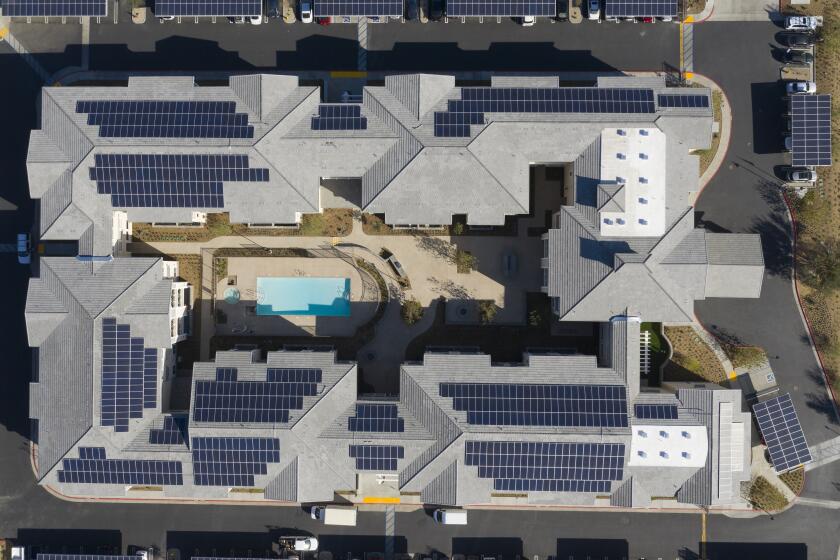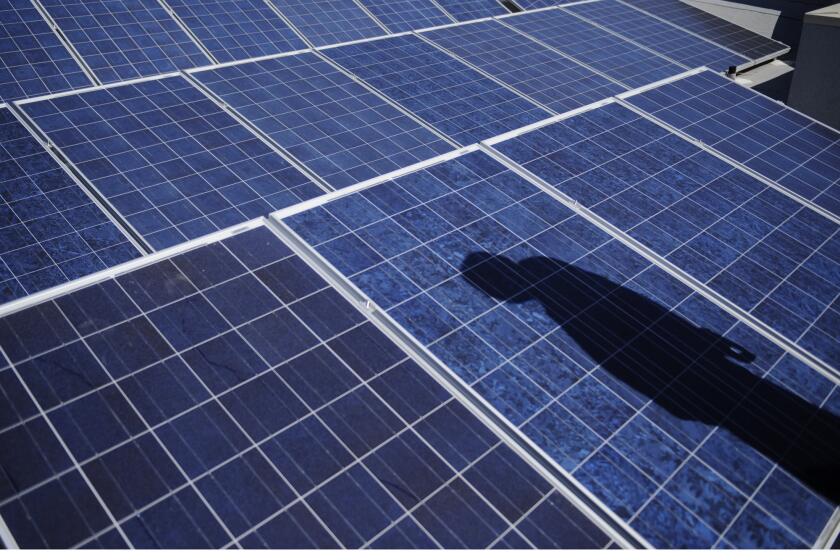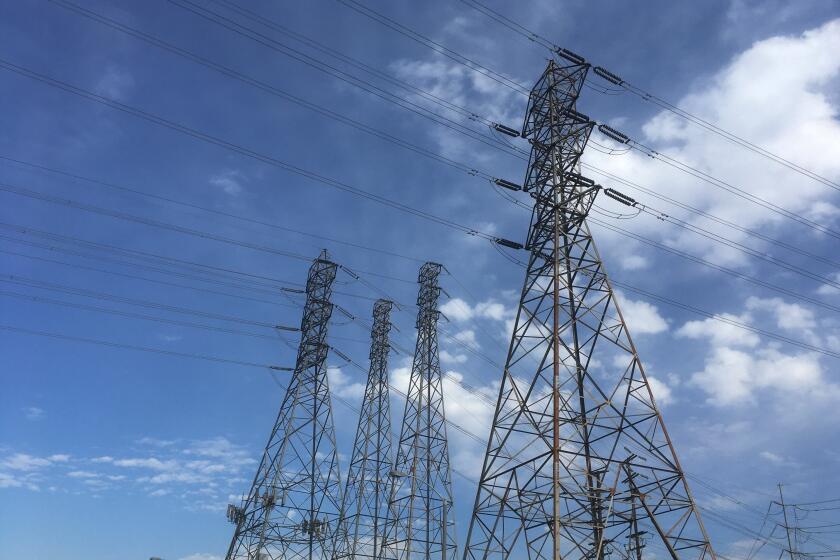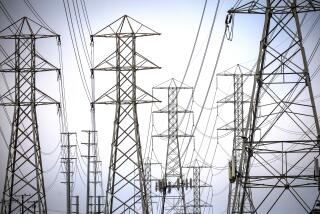California is scrambling to avoid blackouts. Your refrigerator could help
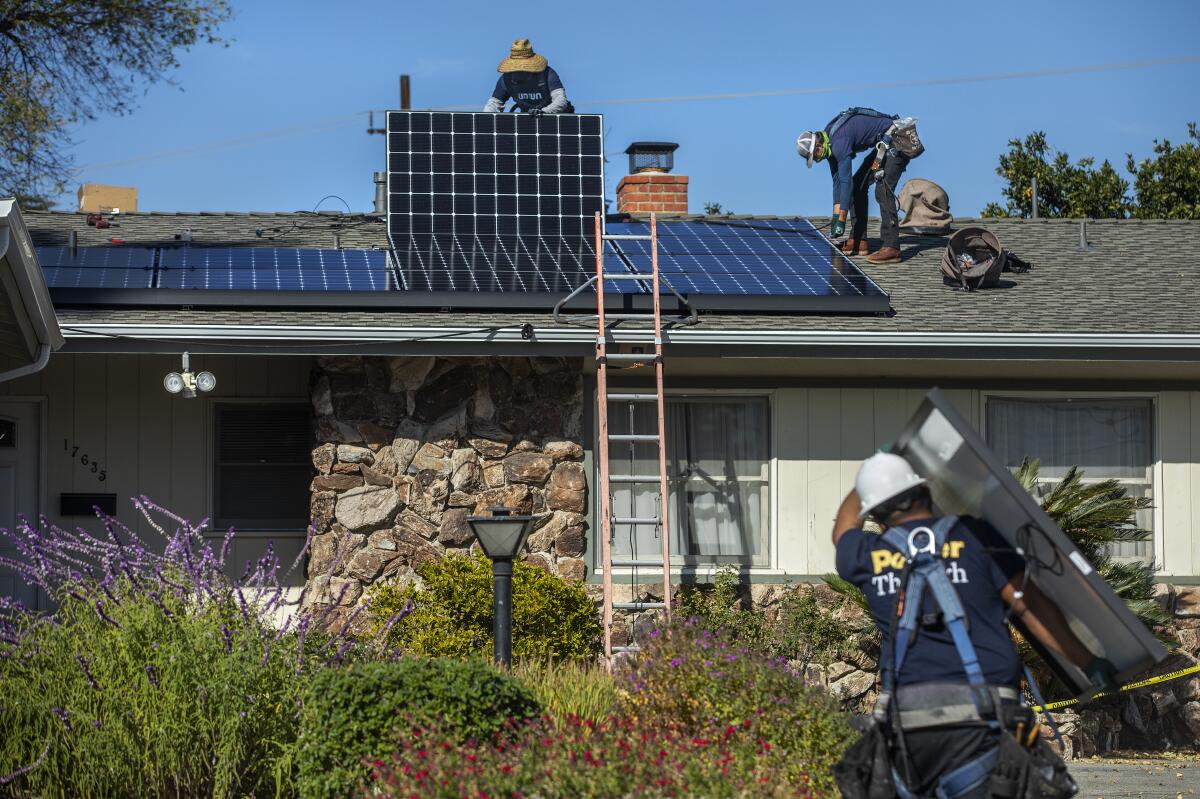
Sometime next summer, there’s a decent chance a heat wave will bake the American West, and California’s power grid will again be stretched to its limits.
As the sun sets, solar panels will start generating less electricity even as temperatures remain high. Power plants that burn natural gas will fire up as quickly as possible, in a race to keep air conditioners blowing and avert the need for rolling blackouts.
But the fossil fuel won’t be alone in riding to the rescue.
As power supplies tighten, lithium-ion batteries — some connected to sprawling solar farms in the desert and others tucked away in household garages — will dispense electricity produced during the afternoon sunlight. A small but growing number of household batteries will be part of coordinated networks, discharging in unison as dictated by the needs of the grid.
Meanwhile, millions of people will cut back on electricity use in their homes, in some cases because state officials asked nicely and in others because they’re getting paid to conserve. Many will have agreed in advance to have their air conditioners automatically turned down a few degrees, or their refrigerators briefly powered down.
As California works to build a future without fossil fuels, electricity generation isn’t just getting cleaner — it’s getting smaller and nimbler. Big power plants and far-flung transmission lines are increasingly being joined by programmable thermostats, solar-charged batteries and even electric cars as key tools for balancing supply and demand.
Your guide to our clean energy future
Get our Boiling Point newsletter for the latest on the power sector, water wars and more — and what they mean for California.
You may occasionally receive promotional content from the Los Angeles Times.
These technologies currently play a small role. But supporters say they can help California avoid a repeat of the rolling blackouts that afflicted a few hundred thousand homes and businesses when a regional heat wave struck last August — the type of extreme weather that’s becoming disturbingly common as the world heats up because of the burning of fossil fuels.
Nobody knows what kind of weather next summer will bring, and several thousand megawatts of new power capacity already are scheduled to come online in the coming months, mostly large batteries.
But state officials are scrambling to find additional energy resources that can be added to the grid — and six months isn’t enough time to build the type of centralized infrastructure historically favored by utilities and regulators.
The tight timeline is an opportunity for companies that install batteries paired with rooftop solar panels or that aggregate energy savings across networks of homes and businesses. They say they can move quickly to increase energy supply or ease demand — especially with supportive policies from Gov. Gavin Newsom’s administration.
“This is an emergency,” said Lynn Jurich, chief executive of San Francisco-based Sunrun Inc., a solar and battery installer. “How we regulate our energy markets and how we incorporate innovation — we need to go a lot faster.”
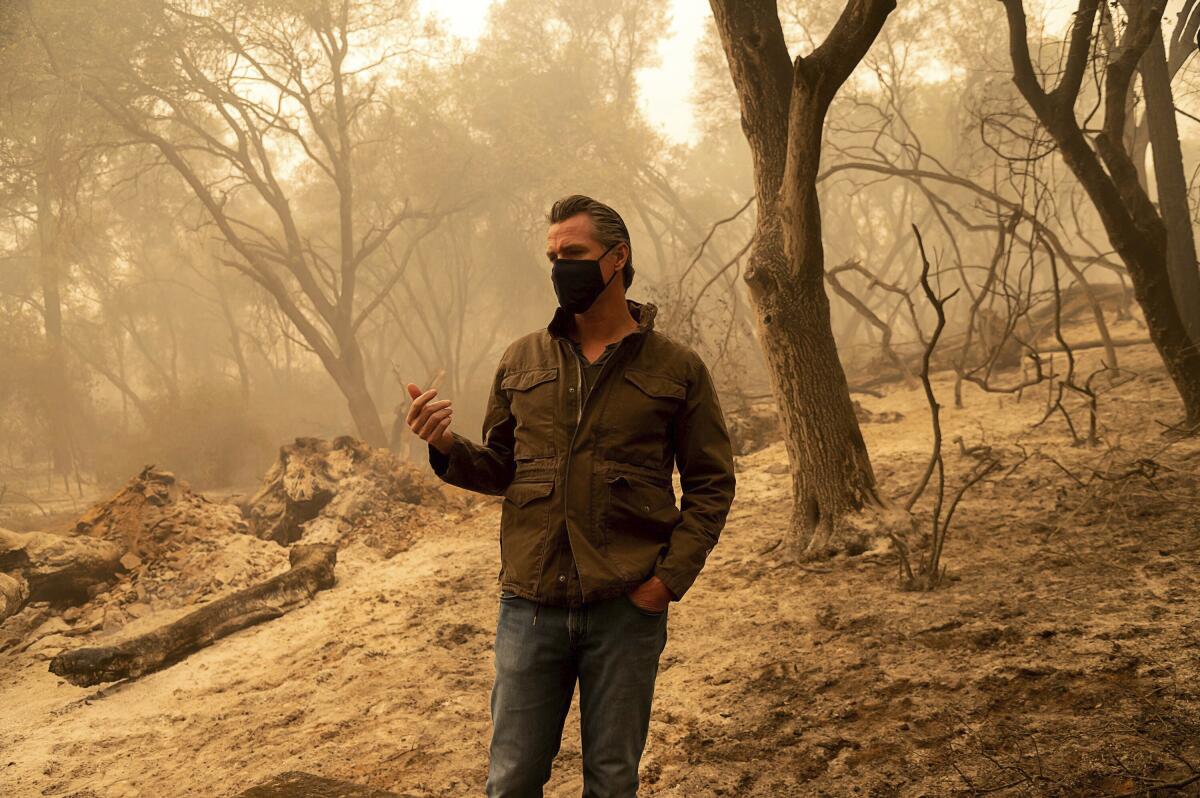
Newsom has used similar language, referring to 2020’s record-breaking wildfires as a “climate damn emergency” and pledging in September to “fast-track” the state’s climate change efforts. He later ordered regulators to ban the sale of gasoline-powered cars by 2035 and called on the Legislature to ban the drilling technique known as fracking.
But Newsom hasn’t taken the kinds of near-term actions that clean energy advocates say would reduce climate pollution and create badly needed jobs while helping keep the lights on next summer.
Even after the governor’s promise of more aggressive climate action, getting his attention has been a challenge, said Bernadette Del Chiaro, executive director of the California Solar and Storage Assn., an industry trade group.
“It’s pretty frustrating for us,” she said. “I keep cutting the administration slack because they keep getting hit with one crisis after another. But at the same time, we’re squarely in the middle of [offering solutions to] these crises.”
Newsom’s office declined to comment for this story, directing questions to the California Public Utilities Commission.
Support our journalism
Your support helps us deliver the news that matters most. Subscribe to the Los Angeles Times.
Officials at the commission and the California Independent System Operator say they’re optimistic about so-called virtual power plants that string together hundreds or thousands of batteries, as well as “flexible demand” programs that pay people to use less electricity. And they don’t want to be caught flat-footed during the next heat wave. They blamed last summer’s rotating outages not only on rising temperatures caused by climate change but also on their own poor planning.
At the same time, they’re cautious by nature, and wary that even well-intentioned changes to the century-old power grid could backfire if not implemented carefully.
Ed Randolph, who leads the utilities commission’s energy division, acknowledged that more household batteries would help the grid by reducing demand after sundown. But he said it’s not yet clear if virtual power plants are as reliable as the gas turbines that currently do the bulk of the work after dark.
And as for flexible demand programs, also known as “demand response,” Randolph said the energy savings they provided during last summer’s grid emergencies weren’t as significant as officials originally thought.
“In the long run, the promise of demand response intuitively makes sense and is something we should pursue,” he said. “In the short run, there’s still a lot of learning to be done. And as we’re looking to reliability for next summer, it’s not the place where we can sit here and say, ‘Let’s experiment.’”
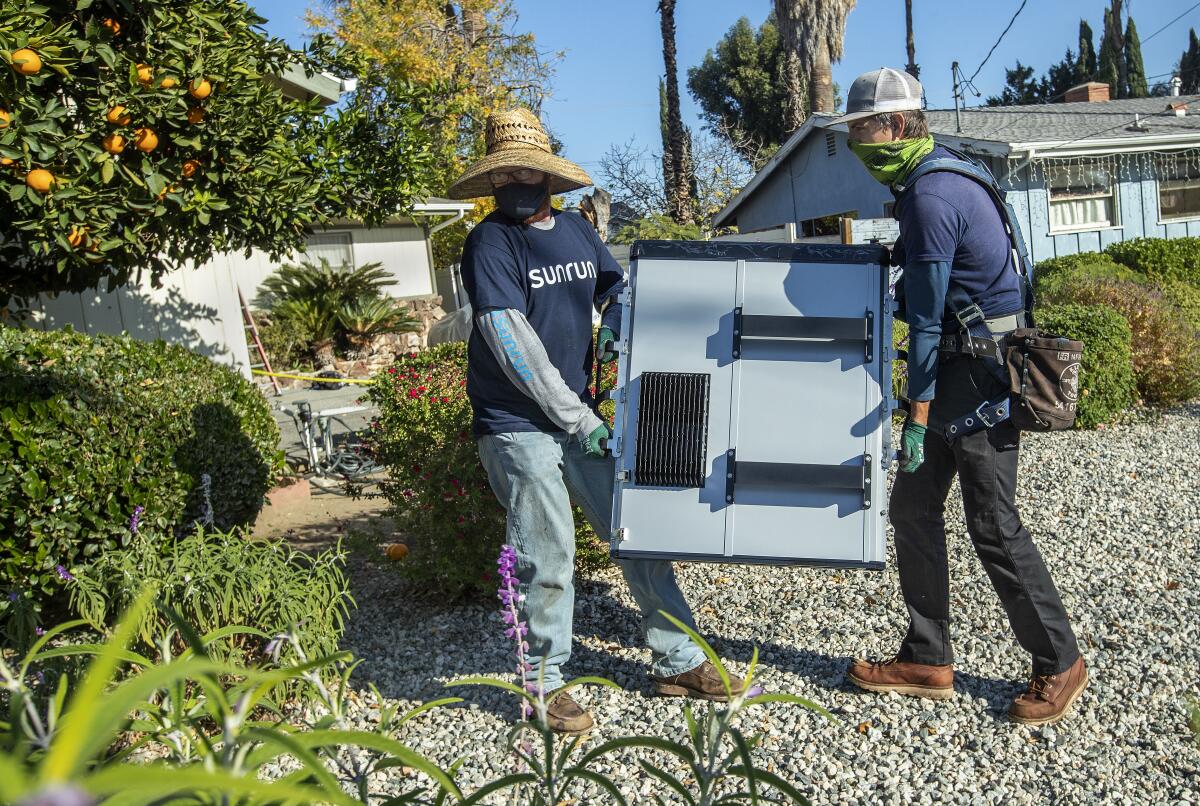
Some energy providers have already moved beyond the experiment phase.
Southern California Edison, an investor-owned utility that provides electricity to 15 million people, recently contracted with Sunrun for a five-megawatt virtual power plant, to be sourced from thousands of batteries installed at customer homes.
That’s a drop in the bucket of the state’s roughly 80,000 megawatts of power capacity. But the virtual plant will count toward Edison’s all-important “resource adequacy” requirement, meaning the utility thinks Sunrun can be trusted in a pinch to keep reliable electricity flowing. And if transmission lines are taken out by a wildfire — or intentionally shut off to limit the risk of ignitions — Sunrun customers will still have a backup energy source.
“You’re giving the utility and system operator so much more flexibility than if you’ve concentrated all those megawatts in one place in the desert,” said Jill Anderson, Edison’s senior vice president of customer service.
To the north, East Bay Community Energy was one of three government-run energy providers to sign similar contracts with Sunrun last year.
Nick Chaset, East Bay’s chief executive, said the price for a five-megawatt virtual power plant operated by Sunrun was “not so far out” from what he’d expect to pay for large-scale solar and energy storage. And unlike with a centralized power plant, spreading the megawatts across thousands of homes and businesses means “there’s not a single point of failure,” Chaset said.
“Even if 5% of the systems at any given time are having an operational issue, you still have the other 95%,” he said.
Gov. Gavin Newsom promised “giant leaps forward” on climate. But so far state officials haven’t embraced a push to require all-electric buildings.
With the right government policies, installers say, they could get batteries into a lot more homes by next summer.
The California Solar and Storage Assn. released a report in November calling for state officials to simplify the process of applying for clean energy subsidies, maintain the popular “net metering” compensation program and allow households with batteries to export electricity to the grid during emergencies, which currently isn’t allowed.
Speeding up local government approval processes is another priority for the solar and storage association. The group has asked Newsom to sign a proposed executive order that would prod city and county officials to adopt virtual inspections and require electric utilities to move more quickly to get installations up and running.
Those steps wouldn’t just help the power grid, they would boost employment and reduce emissions, Del Chiaro said.
“Whether it’s COVID and jobs and economic recovery, or climate change and blackouts and rising energy bills — pick your crisis,” she said. “I’m not saying we’re the only solution. But we are a shovel-ready industry that’s here to grow.”
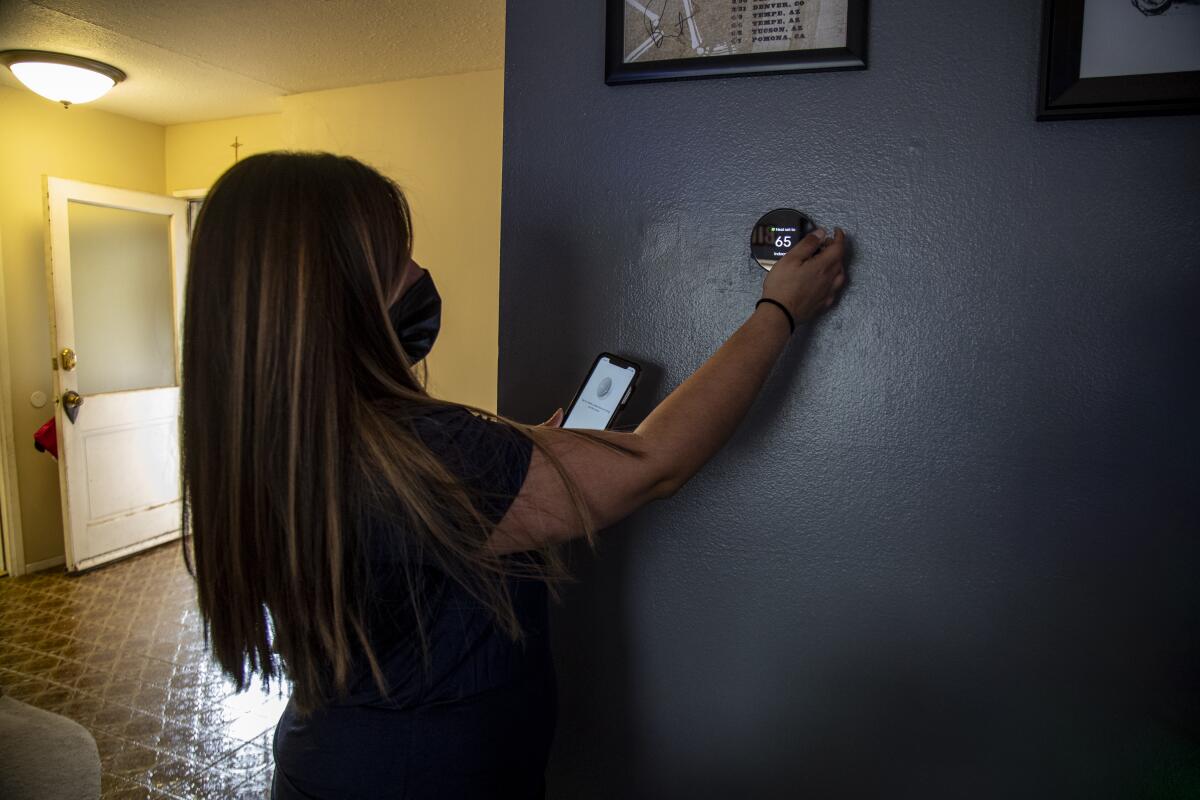
Companies offering “flexible demand” say they’ve got a shovel-ready solution too.
One of the biggest players is Oakland-based OhmConnect, which pays households to use less electricity when the grid is stressed and sells the aggregated savings into energy markets. Last month, the start-up announced a $100-million investment from Sidewalk Infrastructure Partners, which was spun out of Google parent company Alphabet Inc.
The bulk of the money will finance Resi-Station, which at 550 megawatts would be the world’s largest virtual power plant.
Basically, OhmConnect plans to do a lot more of what it’s already doing. The company already has 150,000 active customers in California, some of whom give OhmConnect control over their smart devices and some of whom manually reduce energy use when prompted. The company warns customers when it’s going to power down their devices and gives them a chance to opt out.
“It is common for customers to make $50 to $100 over the course of the year. But we’ve had customers who made more than $100 in a single day,” Chief Executive Cisco DeVries said.
The influx of funding will help OhmConnect sign up new customers in California and outfit them with smart thermostats, as well as smart plugs that can be used to temporarily power down appliances such as refrigerators (which can go without electricity for up to four hours without their contents spoiling). The company is also exploring ways to promote the installation of electric heat pumps, which can heat water during times of day when solar power is abundant and electricity is cheap and store it for later use.
Supplying enough power on hot summer evenings is one of California’s main challenges. But experts say there solutions.
Another major flexible demand start-up is San Francisco-based Leap, which aggregates energy savings from commercial and industrial businesses as well as homes. In November, the company announced a deal to provide the energy-savings equivalent of 12.5 megawatts of reliable power to Redwood Coast Energy Authority and Valley Clean Energy, starting next summer.
Part of the attraction for the government-run electricity providers was Leap’s ability to move quickly.
“For the quick turnaround of summer of 2021, it was extremely competitive pricing. There were very little options at all, and those had to be things that were somewhat in the pipeline,” said Matthew Marshall, Redwood Coast’s executive director. “This wasn’t a case of us saying, ‘We think this is cool, so let’s subsidize it above what the market is showing.’ It stands up on its own.”
The energy research firm Wood Mackenzie reported that California’s power grid operator called on flexible demand providers an unprecedented 70 times during the week of Aug. 14, which began with two nights of rolling blackouts.
The firm projects huge growth in flexible-demand technologies, including electric vehicle chargers. WoodMac analyst Isaac Maze-Rothstein noted that when California’s grid was stressed in August, Tesla sent alerts to its drivers asking them to limit charging.
“I wonder how far off they could be from telling people if you just press this button, we’re going to delay charging for you, and they could have that aggregation participate in a market in the not-so-distant future,” Maze-Rothstein said.
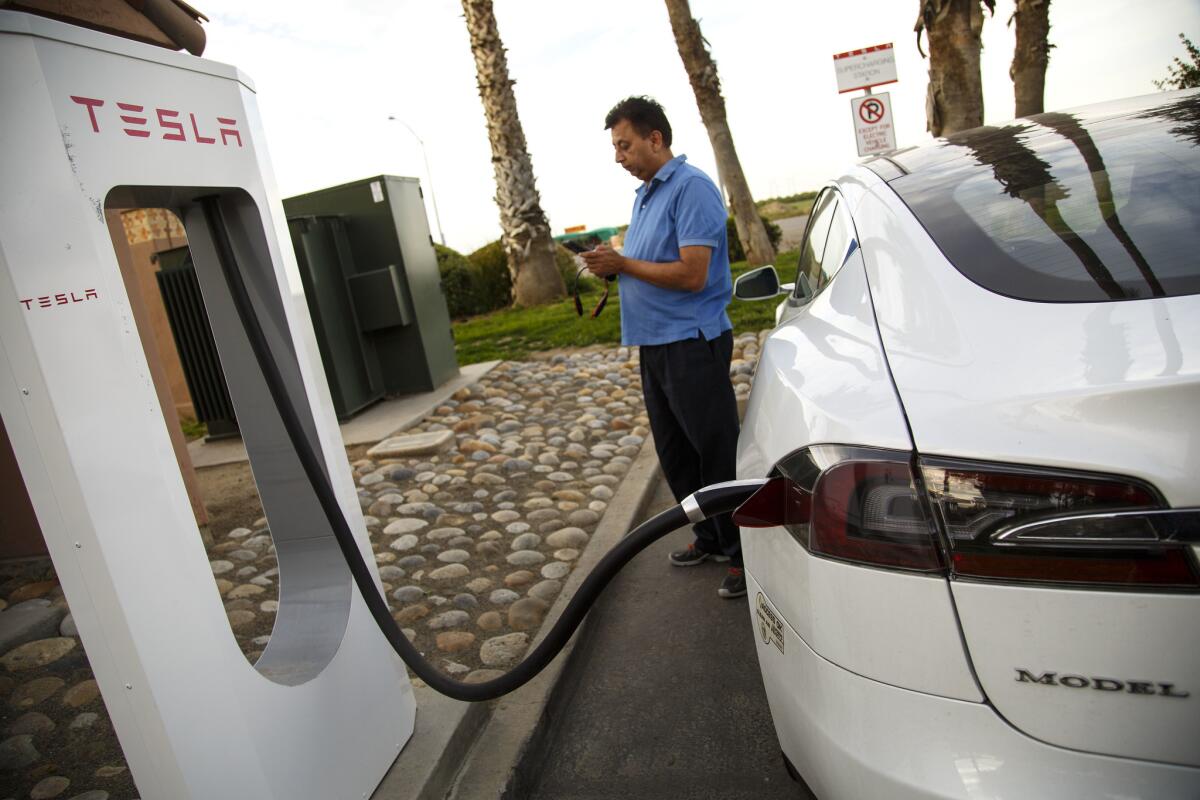
Like solar and storage installers, flexible demand companies say they could move faster with regulatory fixes. But officials at the Public Utilities Commission and the Independent System Operator are hesitant.
For one thing, it’s challenging to estimate how much energy a home or business would have used if not for a company like OhmConnect. And what if lots of people say they’ll use less electricity, but then when a heat wave arrives they decide they need a few extra degrees of cooling, after all?
“We’ll need to work with all of these companies to understand ... what they think they need to do better, and if there are regulatory or market hurdles that keep them from doing better,” said Randolph, the utilities commission energy chief.
Some people will never feel comfortable handing over control of their air conditioner to a third party, even if there’s money in it.
But there’s little question about the potential — especially after the Golden State’s biggest energy savings last summer came from millions of homes and businesses that responded to desperate pleas to conserve, even though they weren’t paid. If even a fraction of those conscientious Californians sign up for paid programs, the grid benefits could be substantial.
“During the August heat wave, there were transmission lines that failed. There were natural gas plants that went offline or reduced operations because it was too hot,” OhmConnect’s DeVries said. “In some ways we are already more reliable, because we never fail. We may show up with a little less or a little more here or there. But we’re going to show up.”
The state recently experienced four of its five hottest August days in the last 35 years — and its power grid wasn’t prepared.
With time running short before next summer, state officials are hurrying to shore up power supplies. Newsom asked them to take climate change into account, writing in an August letter that California “must do more and faster to prevent future outages as we continue to work to transform energy generation.”
Public Utilities Commission President Marybel Batjer issued a memo last month saying the agency will consider a wide range of options, including regulatory changes sought by battery installers and flexible demand companies.
But in a ruling the following week calling for utilities to line up new power supplies, Batjer focused her instructions on efficiency upgrades at traditional power plants. That could result in gas-fired generators adding several hundred megawatts of new capacity.
Officials are also determined to prevent energy companies from permanently retiring aging gas plants, at least for now.
The utilities commission voted in September to extend the shutdown deadline for four gas plants along the Southern California coast, which otherwise would have been required to close this year.
And last month the Independent System Operator’s board of governors voted to issue a “reliability must-run” contract for the 250-megawatt Midway-Sunset gas plant in Kern County, whose owner had announced plans to shutter the facility by year’s end. Now the plant is being required to remain open in 2021.
Neil Millar, a vice president at the grid operator, described the must-run contract as “truly a last resort.”
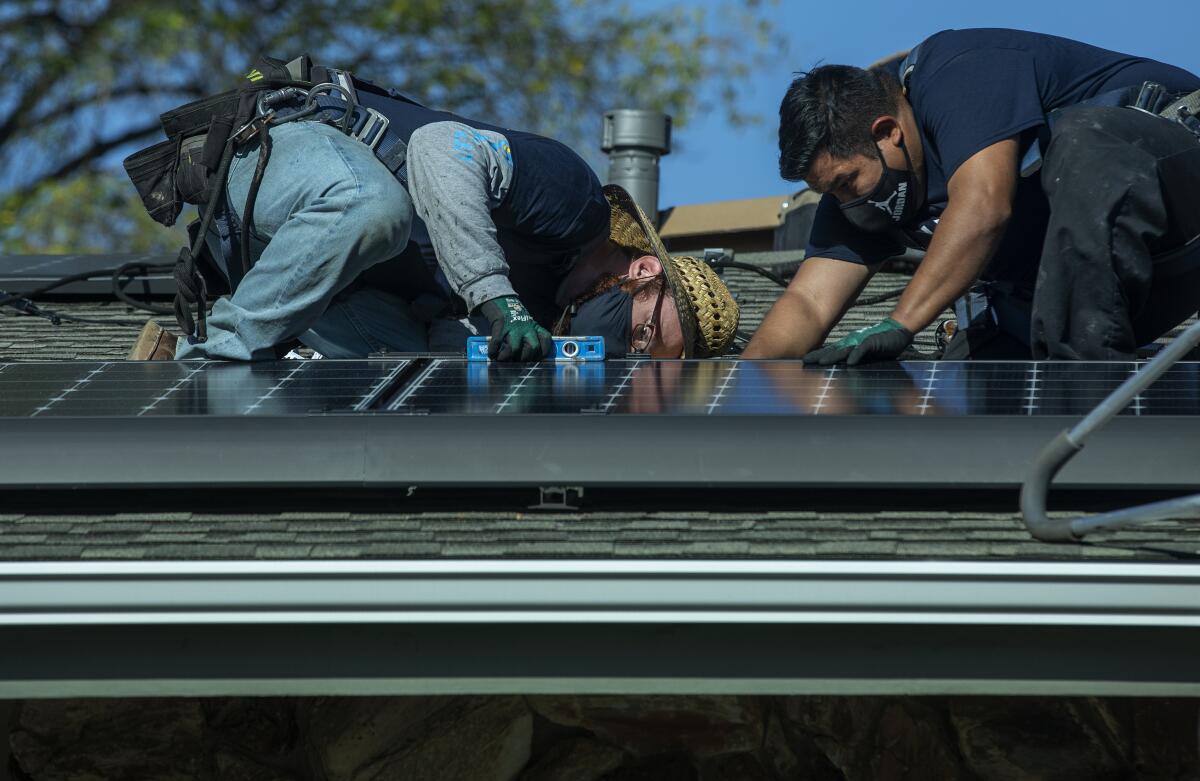
More to Read
Toward a more sustainable California
Get Boiling Point, our newsletter exploring climate change, energy and the environment, and become part of the conversation — and the solution.
You may occasionally receive promotional content from the Los Angeles Times.
